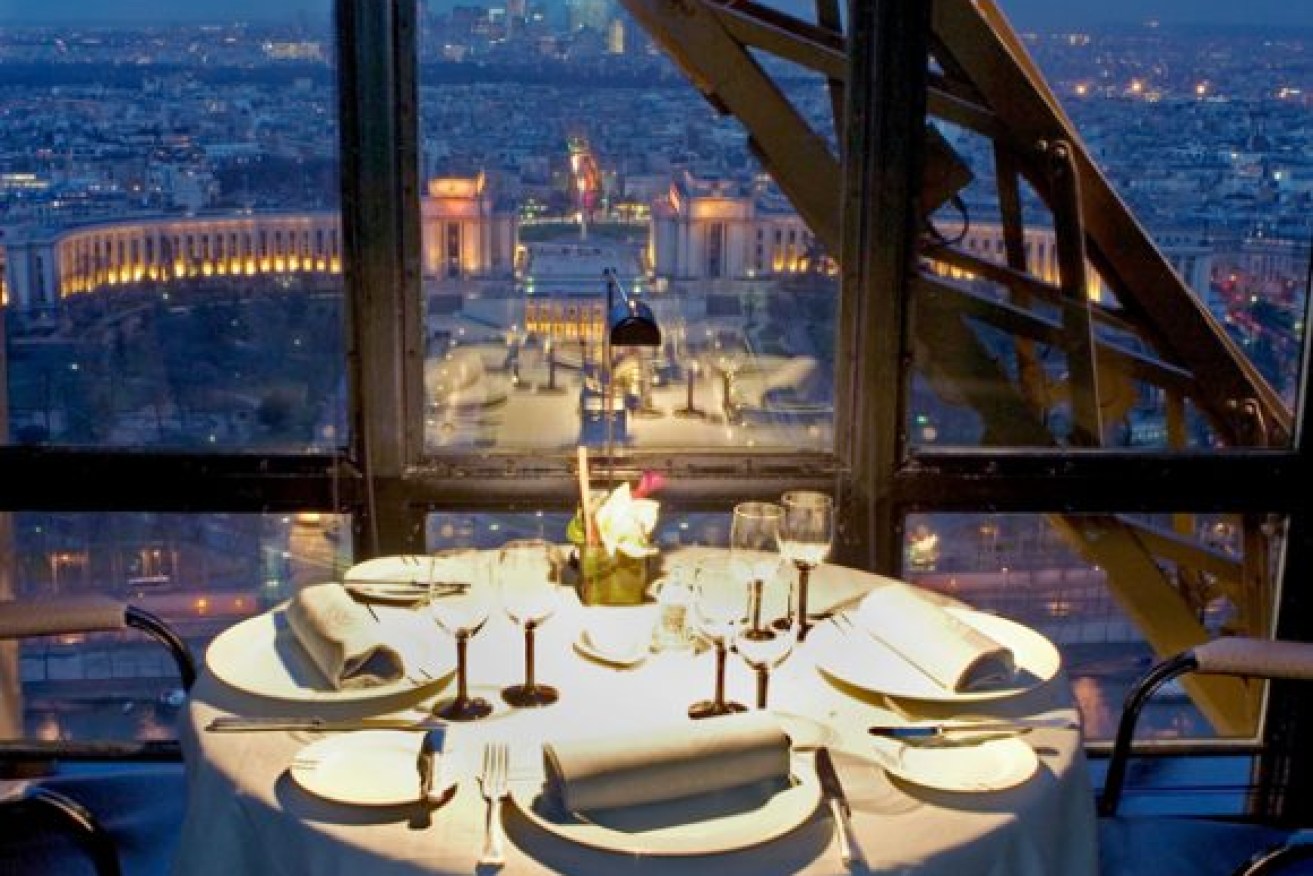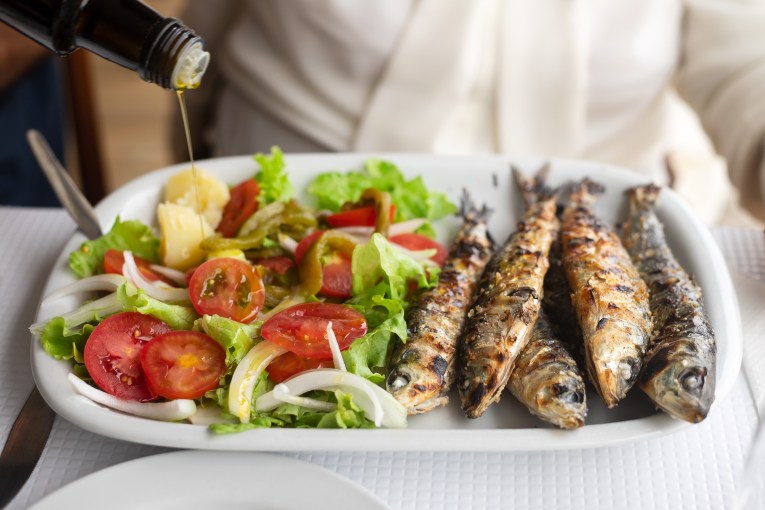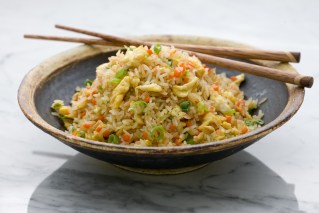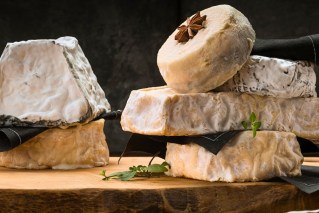Five of the world’s ultimate dining experiences


Another memorable meal at Paris's Le Jules Verne – at the top of the Eiffel Tower.
Most people have a bucket list of things they want to see, do and experience.
However, some of us need another bucket list entirely – for all the things we want to eat.
If you’re one of these people, you might want to consult new book Around the World in 80 Dinners, a foodie bible from two of Australia’s most seasoned food journalists.
Janne Apelgren and Joanna Savill have collated their vast and varied dining experiences into a gastronaut’s guide to the globe, providing insider tips on where to go and what to order in more than two dozen countries.
We’ve handpicked five of the most mouth-watering, jaw-dropping entries in the book to get your foodie senses tingling.
Your gourmet gap year starts here.
1. Le Jules Verne, Paris
You never forget the first time you see it. Around you, people gasp. Cars pull over and tour buses stop as for ten minutes on every hour after dusk the Eiffel Tower comes alight with 20,000 twinkling globes.
Not even one of France’s greatest-ever chefs is immune. Alain Ducasse says the Eiffel Tower ‘moves me to this day, when I stand at its foot or look out at its tangle of beams as the lift takes me upward’.
For Ducasse, there’s a special link: he has presided over the restaurant—125 metres or two levels up the 324-metre tower—since 2007.
Those who poo poo restaurants with views feel happy to make an exception for Le Jules Verne, named for the 19th century author of Around the World in 80 Days.
As the lift opens to the chocolate-hued dining rooms, Paris is at your feet, glimpsed through the tower’s lacy steel. The sense of occasion is delicious. Staff often overhear marriage proposals.

Le Jules Verne’s spectacular dining room. Photo: Pierre Monetta
The food is French, of course— contemporary, luxurious. It manages to compete with the surroundings and the view: a pretty green pea soup with crab and caviar, then lobster, duck foie gras, sea bass with asparagus from Provence, and strawberries with sorbet and shortbread wafers.
Reservations are tricky to snag as they must be staggered meticulously. If all 125 diners arrived simultaneously, it would take one-and-a-half hours to get them up to the restaurant by the small private lift that takes two minutes to crawl up the tower’s south pillar.
In the compact kitchen, cooking is done without flame to reduce the risk of fire.
All this makes dining in the Eiffel Tower more special. As we descend, the tourists have left. It feels like we’ve had a private audience with royalty. And in many ways, we have.
2. Central, Lima
The culinary movement towards the wild, the native and the foraged was in its earliest stages when a promising young chef called Virgilio Martinez opened Central—a stylish, dimly atmospheric and decidedly hip restaurant in Lima’s upscale Miraflores neighbourhood.
Ever since we’ve been astounded by Martinez’s menus: unusual Amazonian fish, curious fruits, extraordinary jungle plants and strange mountain herbs combined with modern techniques and flavours to produce a series of wonderful little tasting dishes.
These days Martinez—with wife Pia Leon also in the restaurant’s glass- walled kitchen—has become the poster boy for new generation Peruvian cooking. Central has been named an astounding fourth in the world. And best in Latin America.

Chef Virgilio Martinez in the Andes. Photo: Central Restaurante
Dish names can be pretty bizarre— the Sixty Mile Fish, Dry Andes, Red Amazon, Untamed Jungle. They’re all about exploration and the journey through this extraordinary country.
Some of the tastes can be surprising— soft, buttery hearts of palm, juicy but starchy yakon (a tuber), or simply intriguing, such as the Red Amazon paiche fish with airampo (a kind of prickly pear).
All of this comes with charming, cosmopolitan service, a cool wine list, lovely lighting and covetable service ware. This is the past, present and future of Peru, on a plate.

The Pesca de 60 Millas (The Sixty Mile Fish) at Central. Photo: Central Restaurante
3. Kogi Truck, Los Angeles
It’s over 100 old-fashioned degrees in the parking lot beneath the high- tension power lines where Kogi Truck Roja is setting up for service. A DJ shelters beneath an awning and pumps out tunes from a Macbook.
The truck has been open for no more than 10 minutes, but already the queue is solid. Office workers, guys with ‘Film Crew’ on the back of their tees, Silicon Val–LA types, all wait patiently for the peculiarly appealing mash-up of Mexican and Korean that chef Roy Choi’s four food trucks ply.
Chasing them down is perhaps the hipster equivalent of being a hunter– gatherer. Some truck stops are way off the tourist path, others, like Venice or El Segundo (between the airport and the beach), are traveller friendly.
Since the 1950s, LA’s sprawling workforce has been fed by food trucks often staffed by some of the country’s newest citizens. Choi became one of those new arrivals when his family migrated from Korea in 1972.
His dishes have Mexican names but take inspiration from Korea, too. The kimchi quesadilla is sharp with pickled cabbage, the mule kick of chilli, the soothing saltiness of cheese. It’s a celebrated hangover cure.
The tacos—on warm corn tortillas filled with soft-braised beef rib and topped with lettuce—might be the best US$2.29 you’re likely to spend on food in the US.
Now, apart from the Kogi trucks, Choi has a handful of bricks-and- mortar restaurants that are quite simply a big-hearted hoot. He’s been the inspiration for a movie (Chef, one of our favourite food films) and a hero to his peers around the world.
4. Sushi Shintaro, Tokyo
It’s 4am and a fleet of whirring tares (small, three-wheeled motorised trolleys) is speeding between fish sellers, pedestrians and the occasional small truck, racing in, out and around the merest obstacles in their paths.

The masterful Shintaro Suzuki. Photo: Joanna Savill
Passing white foam tubs in rickety towers, dangling naked light bulbs, worn wooden counters and squirming sea creatures in plastic buckets, chef Shintaro Suzuki makes his way through Tokyo’s famous Tsukiji fish market towards his regular anago (saltwater eels) seller.
Shintaro-san places his orders at several stalls that are laid out in a grid only 50 years of trading here can teach you to navigate. Then it’s off to his Ginza restaurant to drop off the day’s catch and issue instructions for lunchtime service.
We are about to take a seat at Sushi Shintaro’s counter, for an omakase (chef’s selection) of the day’s best fish. In his navy blue yutaka chef’s jacket behind the counter, 70-year-old Shintaro-san shows the practised hand of a long-time master.
This is sheer sushi magic: one-bite morsel after one-bite morsel, each seasoned with a flick of wasabi between the fish and the moulded rice. No need to add anything.
The anago is fabulous: clean, white meat, just seared, brought to life with a squeeze of sudachi (sour citrus) and with the gentle iodine of the sea.
We move on to sea bream, cuttlefish with a sheet of nori, soft, steamed octopus, a hard-shell clam in sea-sweet broth, prawn, two cuts of tuna—including the rich o-toro (belly)—razor clam, crisp nori rolls with tuna and red clam. And finally, small crunchy cucumbers, first rolled in salt, washed, drained, cut and served with dabs of miso.
This truly is Tokyo at its best.

Some of Shintaro’s wonderfully fresh sushi offerings. Photo: Joanna Savill
5. Mugaritz, San Sebastian
The embarrassment is acute … have we just used the men’s loo at the world’s third-best restaurant?
The waiter directed us, but his English is not so good. When we get there, a man emerges. The doors are labelled XY and XX. But who can remember whose chromosomes are which? We can’t and, it turns out, neither can the bloke who’s just used the ladies.
That’s not the only confusing thing about Mugaritz. In the kitchen, where every guest is welcomed, a macaron awaits. After biting into it, we’re told the meringue is made from blood. And the creamy centre? Liver. This is going to be an interesting night.

The Mugaritz dining room is a blank canvas so the food can take centre stage. Photo: Jose Luis Lopez de Zubiria
Chef Andoni Luis Aduriz wants his restaurant to appeal to the head, heart and taste buds. The Mugaritz blog promises ‘dishes that make sound, appetisers that disappear in your mouth, and the most delicious cream ever made’.
Staff have studied with actors and psychologists to collaborate in a culinary show that has us playing games for prizes like caviar, and fanning smoke from smouldering bark.

Fishbones with nuances of lemon, garlic and cayenne pepper at Mugaritz. Photo: Jose Luis Lopez de Zubiria
Up to 30 courses can be served, and we start with what look like smooth river pebbles but are actually ash-covered potatoes. Bite-sized crunchy ‘fishbones’ are flavoured with lemon, garlic and cayenne.
 The whole dining room pauses as a mortar and pestle is simultaneously delivered to every diner, and we pound toasted seeds and spices. It’s a bonding exercise.
The whole dining room pauses as a mortar and pestle is simultaneously delivered to every diner, and we pound toasted seeds and spices. It’s a bonding exercise.
Next, two fish courses, then guinea fowl, then veal. It feels like we’re on a roller coaster, excitement rising with each new dish.
At the next table, a tall American dines alone, photographing every dish. He tells us he lunched here yesterday, and immediately booked to come back. He marvels that not a single dish of 27 courses is a repeat.
This is an edited extract from Around the World in 80 Dinners by Janne Apelgren and Joanna Savill (MUP, RRP $45, eBook $22.99), available now at mup.com.au or at most good bookstores.








